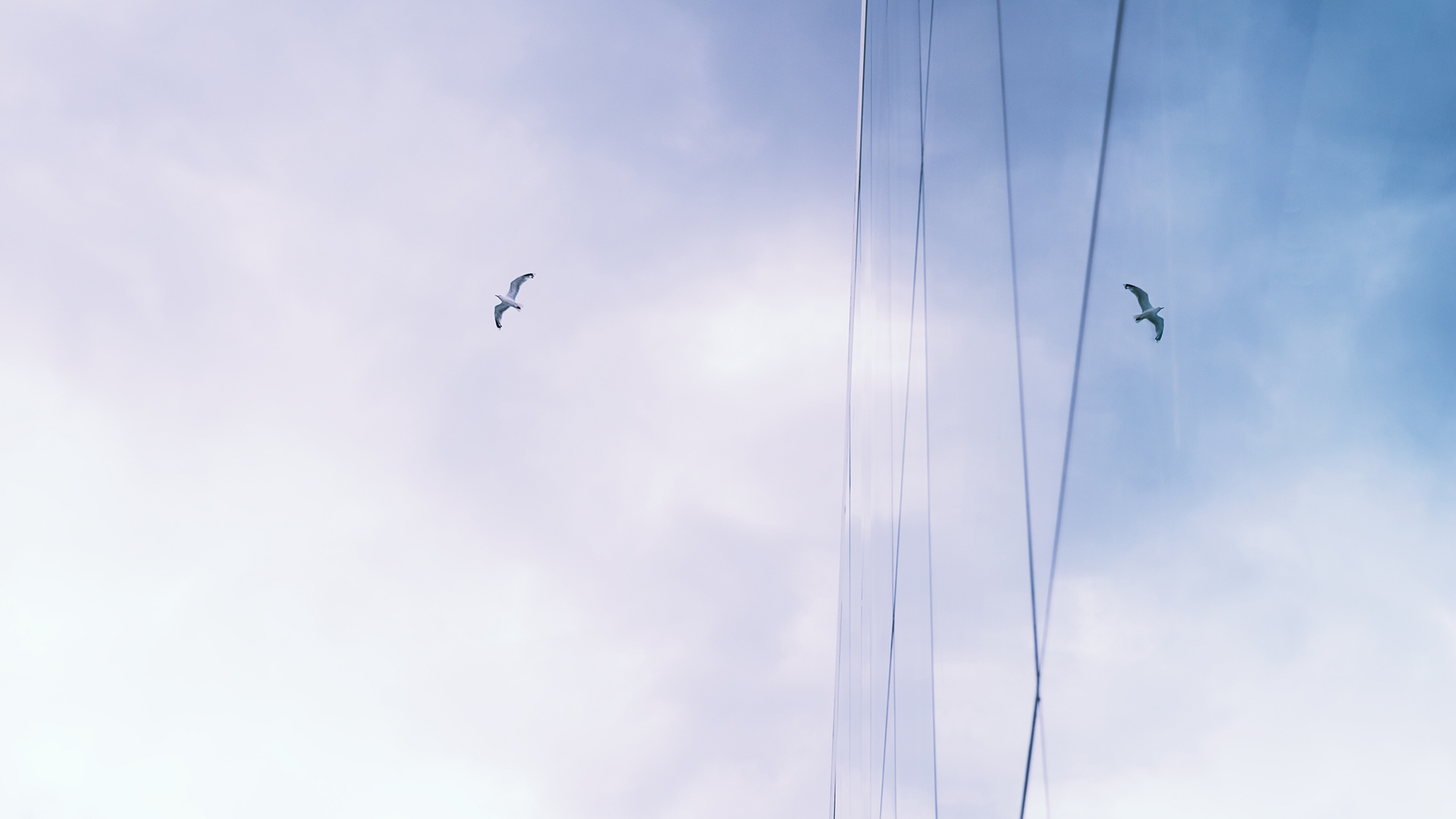
Glass and steel skyscrapers have pushed the boundaries of structural engineering and remain powerful statements of progress and financial clout. Less well understood is their fatal impact on birds.
Research has shown that collisions with buildings cause billions of bird deaths a year worldwide, as avian species on key migration paths are confused by reflections on glass or lights left on at night. In the UK, the British Trust for Ornithology has estimated that windows cause 100 million bird collisions each year, a third of which are fatal.
Skyscrapers grab the headlines, but buildings of all types are a danger to birds. A 2014 study led by researchers at Oklahoma State University found that homes and low-rise buildings account for the vast majority of bird collisions.
Architects have understood how to design and adapt buildings to prevent bird strikes for years, and some cities, mostly in North America, have rolled out specific design standards and guidelines to address the issue. However, wildlife campaigners and conscientious designers believe more should be done to protect our feathered friends, with certain species already dwindling in numbers due to climate change, food scarcity and other factors.
Sue Young, head of planning and land use for The Wildlife Trusts in the UK says: “Many developers consider how birds use buildings for nests and shelter but overlook the problem caused by shiny surfaces and the reflections they create. Buildings should be designed to the highest environmental standards, and innovative design should include the latest solutions for making large areas of glass visible to birds to prevent collisions and deaths. Nature is under extreme pressure and our built environment has a fundamental part to play in helping our beautiful natural world to recover.”
-FXCollaborative-Iwan-Baan.jpg)
Price of progress
A symbol of prosperity, the modern skyscraper has become the go-to solution for urban challenges like expanding populations and limited land availability, but their sleek glazed façades become walls of death for birds.
According to research by bird protection charity NYC Audubon, between 90,000 and 230,000 migrating birds are killed in New York each year as stormy weather and artificial night-time lighting confuse birds’ vision causing them to crash into high rises.
The tragic consequences were captured in viral photos and video posted by NYC Audubon volunteer Melissa Breyer, who in September last year retrieved 226 carcasses from the pavements around the World Trade Center in a single day.
The problem is exacerbated by a trend for urban parks and greenery in and around developments, driven by sustainability and biodiversity targets, which ironically cause more reflections and confusion for birds.
The behaviours of birds also appear to influence the number of incidents. A 2019 study by the University of Michigan analysed a 40-year record of collision-monitoring data from Chicago and Cleveland, covering 93 species, and found that the ‘super colliders’ – species over-represented in the datasets – used flight calls, while those under-represented did not. The results appear to show that birds disoriented by lit up buildings chirp to other nearby birds luring them to their deaths.
High numbers of fatalities are alarming, but they don’t tell the whole story. According to David Noble, principal ecologist at the British Trust for Ornithology (BTO), there are far more serious threats to birds when considered at a population level.
“Bird populations can easily fluctuate 20% year-on-year due to issues like climate conditions over the winter, and food availability during a dry summer,” he says. Reduction of habitat suitable for birds is another major factor, he adds, caused by a change of use to agricultural landscapes, overly managed woodlands or urban expansion.
Nevertheless, Noble advises architects and property managers to “consider measures like treatments to glass to help prevent deaths.”
-FXCollaborative.jpg)
Bills for birds
With the built environment continually expanding to accommodate human population growth, efforts to modify buildings to prevent bird-window collisions are also on the increase.
Several major cities in North America have enacted regulations and design standards to make buildings safer for birds. Toronto led the way back in 2007 when it produced the first set of guidelines for bird-friendly development, which the city recently updated with ‘Bird Collision Deterrence’ and ‘Light Pollution’ documents that form part of sustainable design requirements for any new private and city-owned developments.
New York updated its building codes in 2021 to require the surfaces of new glass buildings over 23 metres tall to be patterned to make them more visible to birds. City-owned and leased buildings must now also turn off non-essential lighting at night during peak migration periods.
Washington DC also jumped on the bandwagon earlier this year, introducing proposed legislation calling for all new buildings to use bird-friendly glass. And there’s a chance that bird-safe building regulations will soon be mandated at a federal level. The Bird-Safe Buildings Act of 2019 passed by the House of Representatives last year would require every “public building constructed, acquired, or of which more than 50% of the façade is substantially altered” by federal property managers to meet new design standards geared toward eliminating bird collisions. Senate approval is still required to enshrine the act in law.
According to Dan Piselli, director of sustainability at FXCollaborative Architects, a designer of several bird-friendly buildings, there is a strong argument for similar policies and laws to these in other municipalities worldwide. The bird collision issue is often ignored by clients and building owners or managers, either because of the perceived cost or a conflict with other project goals.
“The developer of a residential or office building may prioritise views and daylight over energy or climate goals, or concerns about glare, and the bird problem is even less immediate to them,” says Piselli, adding that building codes and standards should establish minimum requirements for bird protection.
A range of products are available to warn birds away from windows and glass façades, including ceramic frit baked on to glass, UV-reflecting patterns, thin screens and dense solar shades. Many are detailed in this guide to materials by the American Bird Conservancy (ABC).
“The developer of an office building may prioritise views and daylight over energy or climate goals, and the bird problem is even less immediate to them” Dan Piselli, FXCollaborative Architects
Responsible retrofit
Property managers for existing buildings should focus remediation efforts on the lower floors, up to about the top of the tree canopy and around 60-100ft, explains Christine Sheppard, director of the glass collisions programme at ABC. “This is the zone where birds are active and where most collisions occur,” she says. Retrofits need not be expensive though: “It is definitely possible to evaluate a building and identify priority areas, rather than have to address the entire building,” she adds.
Techniques employed on projects completed by FXCollaborative include UV coated glass used on façades at the Center for Global Conservation at the Bronx Zoo, which impressively cut the number of bird collisions to zero. Its retrofit of the Javits Center in Manhattan saw the convention centre’s clear glass replaced with panels covered in tiny ceramic dots, cutting bird strikes by around 95%.
A best practice rule of thumb, says Piselli, is to space dots or lines two inches apart horizontally by two inches apart vertically to define a space that most birds will not attempt to fly through.
Patterns need not distract from other ambitions around natural light or views. The fuzzy vertical dotted lines printed on FXCollaborative’s Statue of Liberty Museum deter birds but are barely visible to tourists. This collision prevention strategy was a key contributor towards the building’s LEED Gold certification.
“Innovative design should include the latest solutions for making large areas of glass visible to birds to prevent collisions and deaths” Sue Young, The Wildlife Trusts
Other projects have successfully married architectural ambition and sustainability benefits and bird safety. For example, the newspaper-inspired screens of ceramic rods covering the New York Times Building help manage daylight, offset lighting and cooling energy demands and shield against reflections. Frank Gehry’s enigmatic IAC Building in Manhattan features window bands with a misty graduated pattern that prevents solar gain and can be seen by birds.
As designers, building owners and managers come to understand the issue of bird collisions and incorporate appropriate protection measures into their projects, there’s hope our feathered friends will one day fly safely in our cities, rather than end up being destroyed by them.


